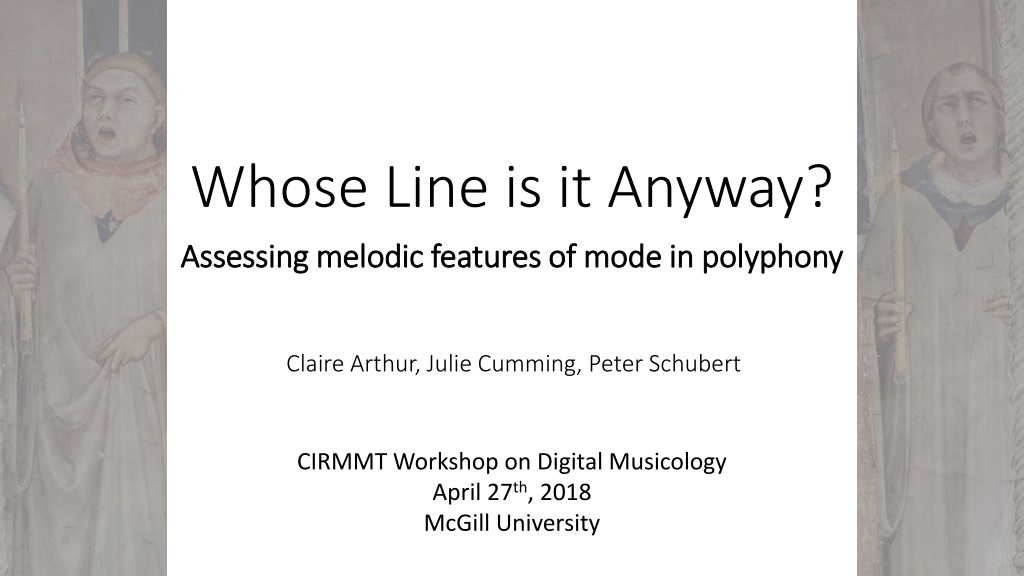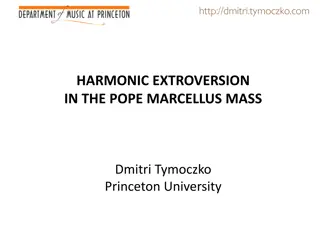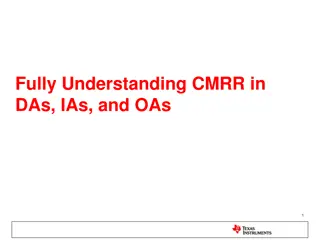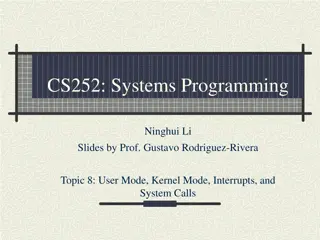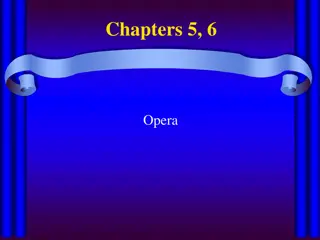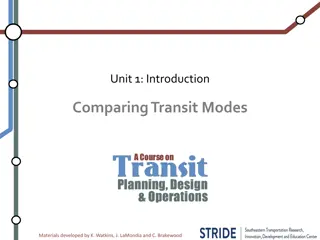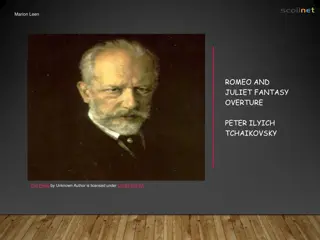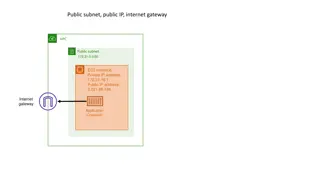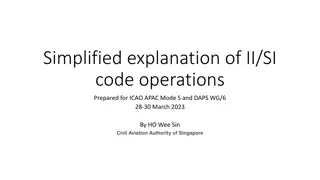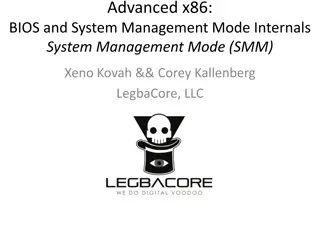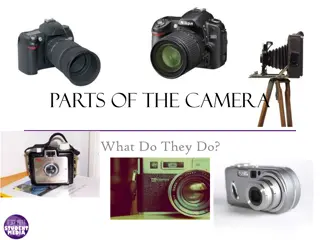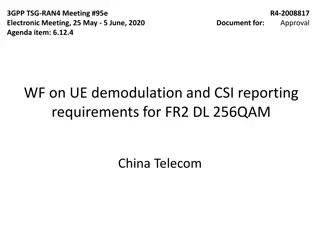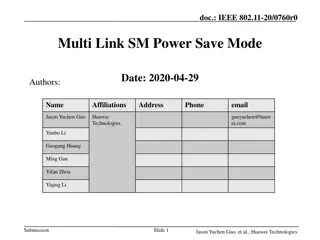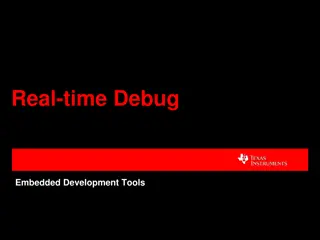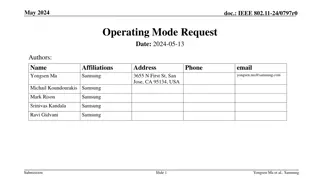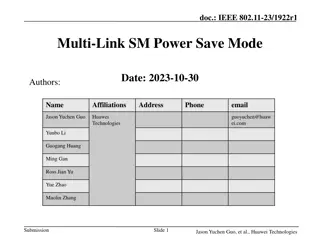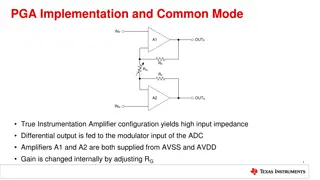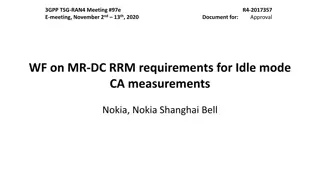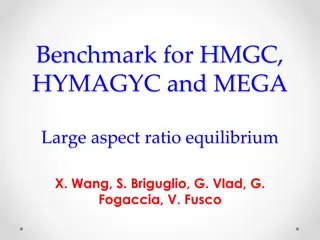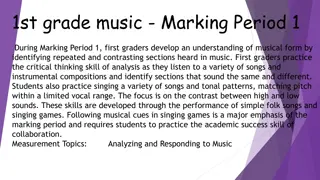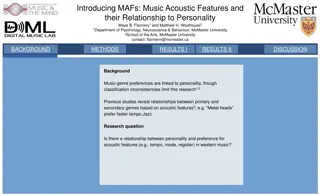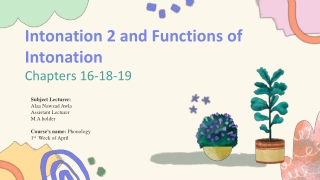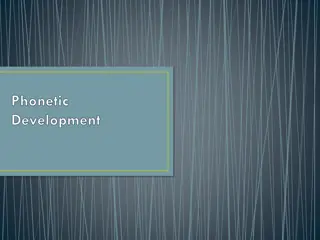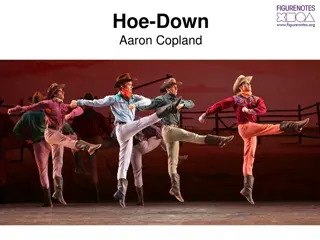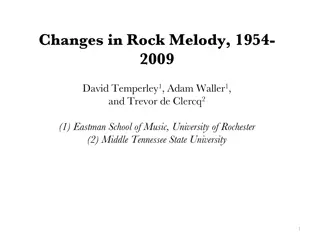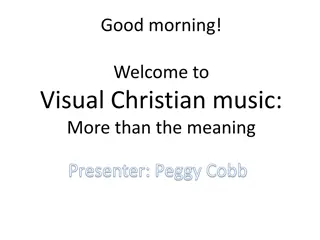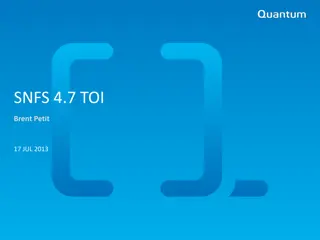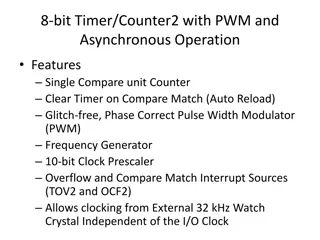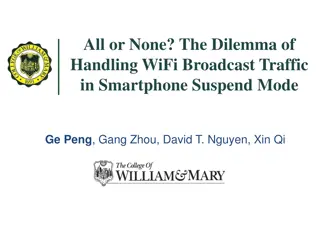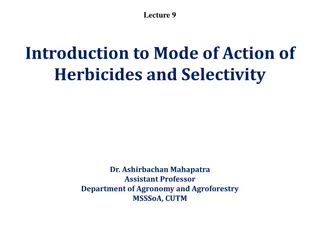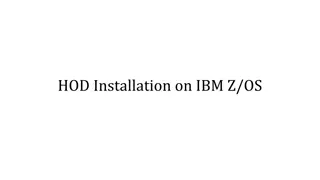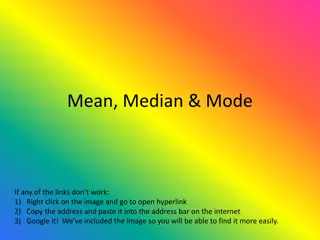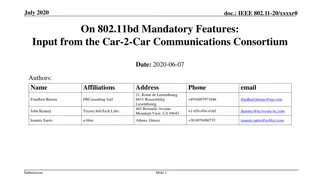Exploring Melodic Features of Mode in Polyphony
Dive into a workshop on digital musicology at McGill University, where experts such as Claire Arthur, Julie Cumming, and Peter Schubert discuss assessing melodic features of mode in polyphony. The event, titled "À La Mode," took place on April 27th, 2018, under the CIRMMT Workshop.
Download Presentation

Please find below an Image/Link to download the presentation.
The content on the website is provided AS IS for your information and personal use only. It may not be sold, licensed, or shared on other websites without obtaining consent from the author. Download presentation by click this link. If you encounter any issues during the download, it is possible that the publisher has removed the file from their server.
E N D
Presentation Transcript
Whose Line is it Anyway? Assessing melodic features of mode in polyphony Assessing melodic features of mode in polyphony Claire Arthur, Julie Cumming, Peter Schubert CIRMMT Workshop on Digital Musicology April 27th, 2018 McGill University
La Mode Debates on the nature of mode in polyphonic music are as popular now as they were in the 16th century: Did composers deliberately compose in the modes? Which musical features best create a sense of mode? Does the plagal-authentic distinction apply to polyphonic works? If so, which voice or melodic line carries the role of P/A identifier? 2
A Computational Approach Corpus investigation of a set of polyphonic duos 44 Renaissance duos with secure modal labels: Pieces used as illustrations in treatises or taken from (labeled) didactic collections. Lasso (1577/1995), Zarlino (1558), Pontio (1588) deliberately composed new duos to illustrate modes. Glarean (1547) used pre-composed or commissioned works to illustrate modes. 3
Corpus of Duos Collection Zarlino Lasso Pontio Glareanus Number of duos 8 12 9 15 Mode 1 2 3 4 5 6 7 8 Number of duos 7 8 5 2 5 6 5 6 4
What Determines Mode? Finalis and Range as most reliable indicators Modes with range of final + 8ve (e.g., D to D ) = authentic Modes from 5 to 5above (e.g., A to A ) = plagal Are these features always stable (and predictable?) within a single polyphonic voice? Are there other features of the melody that could predict mode as well (or better)? 5
The Modal Features of a Line Marchetto of Padua (ca. 1317) illustrates the importance of highlighting bounding notes of a species through melodic leaps and outlines: The first mode according to Marchetto. We add brackets to show leaps (below) and outlines (above). 6
The Hypothesis Notes forming melodic leaps and outlines function as structural tones salient features of musical surface; carry modal significance Tallies of pitches forming leaps/outlines can be used to predict mode. 7
Methodology Pieces reduced to set of tables containing pitch contents of leaps and outlines. Two rounds of guessing mode of each piece: Information about interval size, leap/outline direction, and register/range is either A. Eliminated (focus on pitch class content.) Study 1 B. Retained Study 2 Two methods to evaluate hypotheses: Regression modeling Behavioral experiments (i.e., expert guesses ) 8
Methodology Example table from Study 1: A B C D E F G Upper Voice Leap Endpoint 8 3 9 4 5 3 Outline 8 5 6 5 1 3 Lower Voice Leap Endpoint 6 3 6 11 4 4 3 Outline 8 3 2 6 9 2 4 Total 30 6 16 32 22 12 13 9
Results: Study 1 Expert Guesses: Chance accuracy at mode* = 12.5%; Chance accuracy at mode family = 25% Expert mode accuracy = 35%; Expert mode family accuracy 65% Overall expert agreement = 86% 10
Results: Study 1 Regression Models: Baseline accuracy at mode* = 18%; Baseline accuracy at mode family* = 34% Model mode accuracy = 30-36%; Model modefamily accuracy 62-67% 11
Results: Study 1 Summary: Regression models and experts perform with roughly equal accuracy Classifying mode & mode family with better-than-chance accuracy using only tallies of leaps and outlines. However, distinguishing plagal vs. authentic may require additional information Notes forming leaps/outlines are very poor predictors of mode* 12
Methodology Example table from Study 2: From/To C3 D3 E3 F3 G3 A3 B3 C4 D4 E4 F4 G4 A4 C3 D3 E3 F3 G3 A3 B3 C4 D4 E4 F4 G4 A4 Total X 1 1 2 X 2 3 2 3 1 X 1 5 1 X 1 6 X 3 4 3 X 4 1 X 1 1 6 1 1 X 2 X 2 1 2 1 X 3 X 3 1 6 X 1 X 2 6 7 6 5 13 2 9 10 3 1 13
Results: Study 2 No regression modelling (too many parameters for too little data) Experts overall ability no better than in Study 1! Expert Guesses: Expert mode accuracy = 39%; Expert mode family accuracy 61% Overall expert agreement = 70%* Summary: having additional melodic information doesn t help ID mode family; marginally helpful for distinguishing plagal/authentic (i.e. mode) 14
Summary Evaluation Leaps/outlines are poor predictors of mode; decent predictor of mode family? Compared with WHAT? Pitch classes do not appear with equal frequency (e.g., Temperley, 2007), therefore, chance not really appropriate comparison. Accordingly 15
Comparison Sets Regression results from Study 1 compared against predictive power of two alternative comparison data sets: Comparison set #1: Only melodic motion by step(i.e., remainder ) Comparison set #2: Complete counts of all pcs (i.e., pc distribution) 16
Summary Melodic Data: Studies 1 and 2 Regression model Mode Mode family test data: leaps and outlines 36% 67% comparison set 1: remainder notes 39% 68% comparison set 2: pc distributions 45% 71% Experiment w/ experts experiment 1: pc tallies 35% 65% experiment 2: pitch, interval size & 39% 61% direction Full score experiment 67.5% 100% 17
Conclusions We suggest the authentic/plagal distinction is not clearly marked in polyphonic music Subsequent analyses show the traditional measures of range not used predictably (e.g. only 11/44 duos have both voices with same range). Our findings did not align with the theory about the significance of leaps and outlines but 18
Word(s) of Caution Our data set was very small! (Only 44 duos) The proportion of commixture is unknown 19
Mode 1 (Dorian) Mode 2 (Hypodorian) 20
Conclusions Leaps and outlines may still indicate mode family (more work needed!) Consistent with notion that plagal-authentic distinction had no clear definition in 16th century polyphony. 21
Thank You! 22
